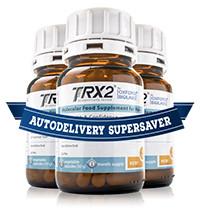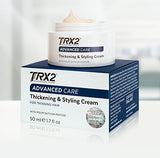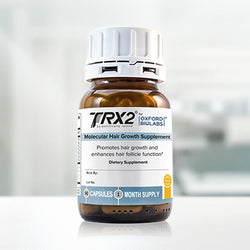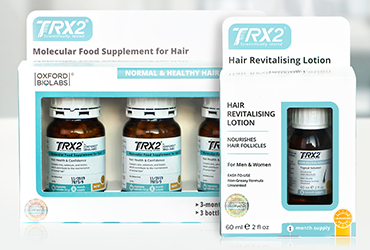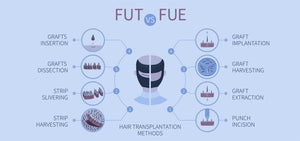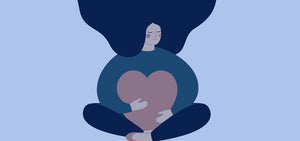If you are losing hair, you probably have a few questions about hair loss; in particular, what you can do about it. The first step to understanding your hair loss would be to familiarise with the hair growth cycle, because in order to understand why we lose hair, we should understand why we have hair.
Just as all human body parts do, hair serves several distinct purposes. Hair covers the entire human body, protecting our skin from things like bacteria, the sun and the negative effects of extreme temperatures. The eyelashes and eyebrows experience the same growth phases as the scalp hair; the only difference is in the phase duration.
Hair is actually quite a complex thing, but this article aims to help you understand it better so that you can keep your own hair in great condition…
It all starts with hair follicles
First things first: your hair wouldn’t be what it is without hair follicles, so let’s get to grips with what they are, and their role in the life cycle of your hair:
- The hair follicle is a tunnel-like segment of the epidermis that extends down into the dermis
- The hair itself is formed by a hair follicle, which we don’t see as it is in the epidermis, and the shaft - the visible part
- Hair follicles are formed even before a baby is born
- There are around 5 million hair follicles on the body and around 1 million on the head
- The number of hair follicles always remains the same during our life cycle
- The hair shaft grows from the follicle, and is made of a protein called keratin
- When your growth is normal, it will grow at a rate of around 0.3-0.4 mm per day
If you want to know whether or not you have hair loss issues, it will help to know that hair grows in a set cycle. Like many biological functions, it depends on precise timing and supply of adequate nutrients.
The 3 phases of hair growth
The hair cycle consists of 3 phases:
The anagen phase
The active hair growth phase is called the ‘anagen’ phase, when the root of the hair is dividing rapidly, adding to the hair shaft. This phase lasts for up to 6 years. During this period, the hair is still attached to the papilla cells, which play a pivotal role in hair formation. They act like an umbilical cord, supplying the necessary nutrients and blood to the growing hair follicle.
In normal hair cycling, approximately 85-90% of all scalp hair is in the anagen phase.
The catagen phase
During the catagen phase, the papilla cells retract from the follicle and the hair ceases to grow further. The catagen phase describes the transition from the anagen phase to the telogen phase, and lasts for between 3 and 6 weeks. At this point the follicle slowly detaches from the papilla and moves toward the telogen phase. Approximately 2 to 3% of hairs go through this phase.
The telogen phase
The final phase in the growth cycle is the telogen phase, and it is essentially the rest phase. This phase lasts for around 2 to 3 months, during which time the hair is fully detached from the papilla. Around 10 to 15% of your hair will go through the rest period of the hair growth cycle. They then stop growing and fall out… which brings us to the ‘exogen’ phase.
The exogen phase
The last phase is a separate face, and technically not part of the growth phases. The exogen phase is the stage when the old, dead hair is released from the follicle. This is when you will notice that your hair is shedding – and may begin worrying that you are losing your hair!
At the end of this phase, if the hair follicle has enough nutrients, the new hair growth cycle begins. Incidentally, if you’re wondering why your hair seems to grow in different areas at different times, it’s because every hair follicle cycles independently. So some hairs will be growing while others are shedding.

How can you optimise your hair growth?
Trichologists (specialists for diseases or problems related to the hair and scalp) will tell you that a healthy adult person usually loses up to 100 hairs per day, so don’t be alarmed if your hairbrush (or carpet!) seems to be collecting quite a bit of hair. However, to optimise your hair growth, you will need your hair to stay in the anagen phase for as long as possible.
Furthermore, since this phase is directly influenced by the exogen phase (which will be optimal when hair has enough nutrition) it is important to always take care of your hair with correct nutrition. Besides, it is a good idea to support both your hair and body with a healthy lifestyle and proper nutrition.
When your body (and therefore your hair) don’t receive the necessary nutrients, your hair doesn’t stay in the anagen phase long enough, and you may notice more hair shedding. You may find that your hair isn’t growing as abundantly as it used to (although it still can, of course). It may also lack shine and lustre. These problems can also occur when your body or mind is stressed, or under heavy medication or hormonal changes – so all of these things should be monitored.
To conclude, if you want to prevent unnecessary hair loss and keep your hair in good condition, be aware of your hair cycles and take care of yourself and your hair every day! We hope you found this article informative, and if you want to learn more about hair loss, we highly recommend this ebook by Dr. Thomas Whitfield.